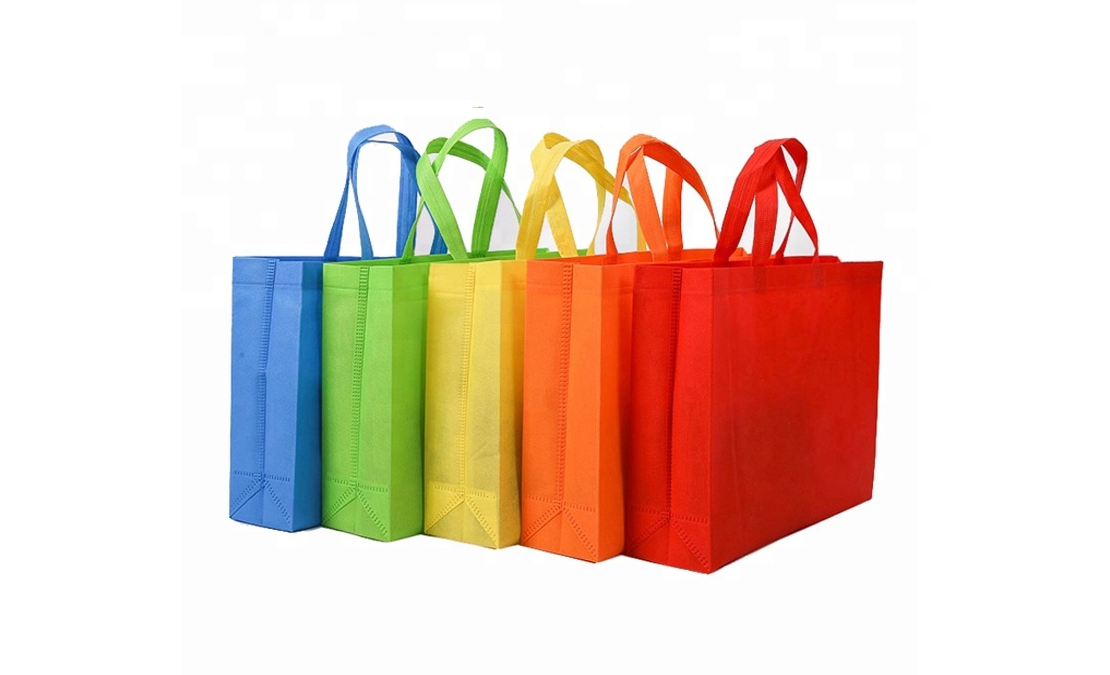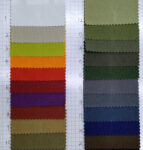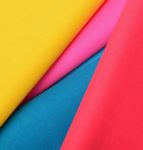Woven and nonwoven fabrics are both popular choices for clothing, furniture, and other textiles, but they have distinct differences between them. Read on to learn more about the properties, uses, and production methods that set these two fabric types apart.
Definition and Sources of Woven and Non-Woven Fabrics
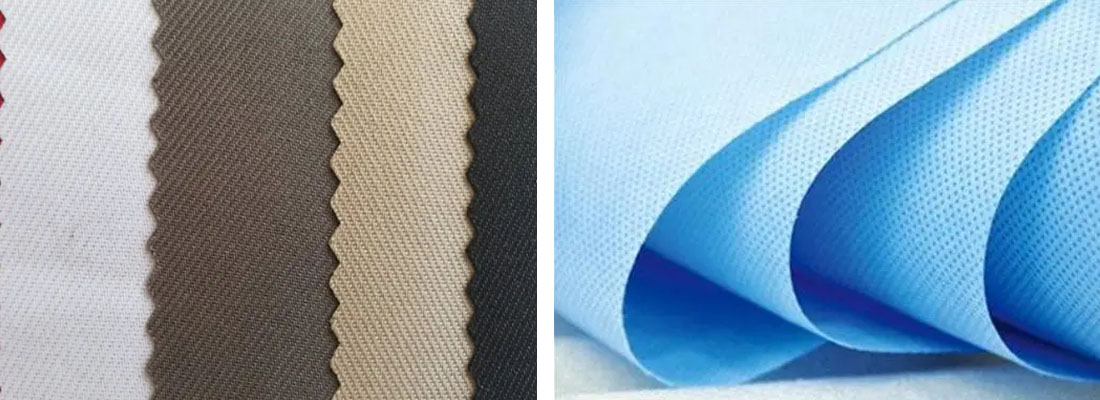
Woven and non-woven fabrics are two common types of textile materials.
Woven fabric is made by interlacing two sets of yarn or threads at right angles to each other. The lengthwise threads are called the warp, while the crosswise threads are called the weft. The process of weaving involves passing the weft thread over and under the warp thread, creating a stable and strong fabric. Woven fabrics are known for their durability and strength, making them ideal for products that require high resistance to wear and tear, such as clothing, upholstery, and bags.
Non-woven fabrics, on the other hand, are made by bonding or felting fibers together, rather than weaving or knitting them together. Non-woven fabrics can be made from natural fibers, such as cotton or wool, or synthetic fibers, such as polyester or nylon. The fibers are either bonded together mechanically or chemically, or they are felted together using heat, moisture, and pressure. Non-woven fabrics are often used for products that require absorbency, such as wipes, diapers, and sanitary napkins, as well as for filtration, insulation, and packaging.
Sources of woven and non-woven fabrics can vary widely depending on the type of fiber and the manufacturing process used. Woven fabrics can be made from natural fibers such as cotton, wool, silk, and linen, or from synthetic fibers such as polyester, nylon, and rayon. Non-woven fabrics can be made from a variety of materials, including wood pulp, cotton, polyester, nylon, and even recycled materials. The source of the fabric will determine its properties, such as strength, durability, texture, and absorbency.
Physical Properties of Woven and Non-Woven Products
Woven and non-woven products are two different types of textiles that have different physical properties. Here are some of the physical properties of these products:
Woven Products:
Strength: Woven fabrics are known for their strength and durability. They are made by interlacing yarns or threads at right angles, creating a strong and stable structure.
Tensile Strength: The tensile strength of woven fabrics is high, meaning they can withstand a lot of force without tearing or breaking.
Breathability: Woven fabrics are generally more breathable than non-woven fabrics, allowing air to pass through and making them more comfortable to wear.
Drape: Woven fabrics have a good drape, which means they hang well and can be used for clothing that requires a fluid, flowing appearance.
Texture: Woven fabrics have a distinct texture that can be smooth or rough, depending on the type of weave and the fibers used.
Non-Woven Products:
Softness: Non-woven fabrics are often softer than woven fabrics, making them more comfortable to wear.
Absorbency: Non-woven fabrics are highly absorbent, which makes them ideal for products such as wipes, medical dressings, and hygiene products.
Elasticity: Some non-woven fabrics can be elastic, meaning they can stretch and recover their original shape, making them ideal for use in clothing and other products that require flexibility.
Tear resistance: Non-woven fabrics have good tear resistance, which means they can withstand stress and are less likely to tear or rip.
Uniformity: Non-woven fabrics have a uniform structure, which makes them ideal for use in products that require consistency, such as filters and geotextiles.
Overall, woven fabrics are stronger and more durable, while non-woven fabrics are softer and more absorbent. Both types of fabrics have their own unique physical properties that make them suitable for a wide range of products
Uses of Weaved and Non-Weaves Resources
Weaved resources and non-weaved resources refer to different types of materials that can be used for a variety of purposes. Weaved resources are materials that are made by weaving strands or fibers together to create a sturdy and durable fabric. Non-weaved resources, on the other hand, are materials that are not created through weaving, but rather through other methods like knitting, felting, or bonding fibers together using heat or chemicals.
Uses of Weaved Resources:
Clothing: Weaved fabrics such as cotton, wool, silk, and linen are commonly used to make clothing.
Home furnishings: Weaved fabrics such as upholstery fabric, curtains, and tablecloths are commonly used in home decor.
Bags and accessories: Weaved fabrics such as canvas and denim are commonly used to make bags, backpacks, and other accessories.
Industrial uses: Weaved fabrics are also used in industrial applications such as conveyor belts, filtration systems, and geotextiles.
Uses of Non-Weaved Resources:
Medical applications: Non-weaved fabrics are commonly used in medical applications such as surgical gowns, masks, and wound dressings.
Cleaning products: Non-weaved fabrics are used in cleaning products such as wipes and mops.
Packaging: Non-weaved materials such as felt and foam are used in packaging to protect fragile items during shipping.
Automotive industry: Non-weaved materials are used in the automotive industry for applications such as insulation and soundproofing.
Production Systems for Woven and Non-Woven Fabrics
Woven and non-woven fabrics are two of the most commonly used materials in the textile industry. Woven fabrics are made by interlacing two sets of yarns at right angles to each other, while non-woven fabrics are made from fibers that are bonded together without the need for weaving.
Here are the production systems for both woven and non-woven fabrics:
1.Production System for Woven Fabrics:
The production system for woven fabrics involves the following processes:
a. Spinning: The first step is to spin the raw materials, such as cotton or polyester, into yarns.
b. Warping: In this process, the warp yarns are wound onto a large beam or roller in preparation for weaving.
c. Weaving: The warp yarns are threaded through the loom and interlaced with the weft yarns to create the woven fabric.
d. Finishing: The finished woven fabric is washed, dyed, and treated to improve its appearance, durability, and other properties.
2.Production System for Non-Woven Fabrics:
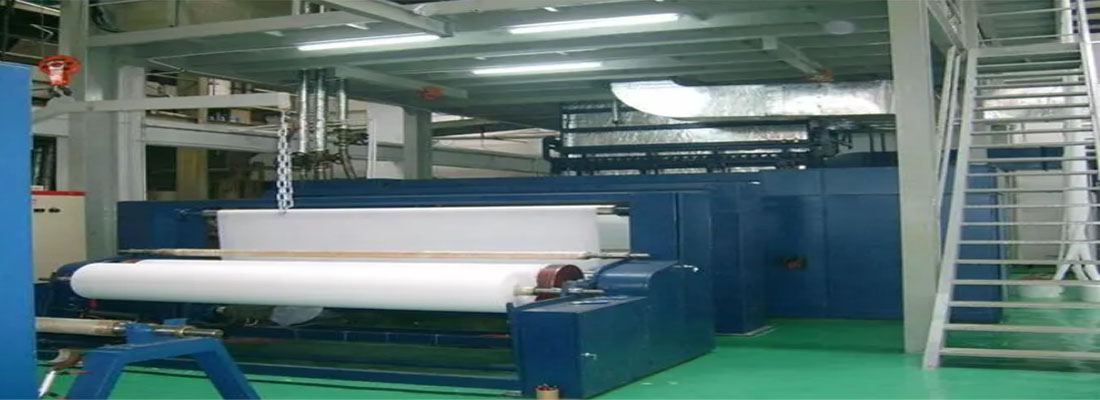
The production system for non-woven fabrics involves the following processes:
a. Fiber Preparation: The first step is to prepare the fibers, which can be made of natural or synthetic materials, by carding, spinning, or other methods.
b. Web Formation: The fibers are then laid out on a conveyor belt or other surface to create a web or sheet of non-woven fabric.
c. Bonding: The fibers are bonded together using one of several methods, such as heat, pressure, or chemical bonding.
d. Finishing: The finished non-woven fabric is treated to improve its properties, such as strength, absorbency, or water resistance.
Both woven and non-woven fabrics have their own advantages and disadvantages, and their choice depends on the specific application and requirements.
Advantages & Disadvantages of the Two Textiles
Woven textiles and non-woven textiles are two types of fabrics that differ in their manufacturing process and properties. Here are some advantages and disadvantages of each:
Advantages of Woven Textiles:
1.Durability: Woven fabrics tend to be more durable than non-woven fabrics because they are made from interlocking fibers. They are able to withstand wear and tear over time.
2.Breathability: Woven fabrics allow for air to pass through them, making them more breathable than non-woven fabrics. This is why they are often used in clothing and bedding.
3.Aesthetics: Woven fabrics come in a wide range of designs and patterns, making them more visually appealing than non-woven fabrics.
4.Versatility: Woven fabrics can be used for a variety of applications, including clothing, upholstery, and home decor.
Disadvantages of Woven Textiles:
1.Cost: Woven fabrics tend to be more expensive than non-woven fabrics because they require more time and resources to manufacture.
2.Limited Stretch: Woven fabrics have limited stretch, which can be a disadvantage in some applications where flexibility is required.
3.Susceptible to Wrinkles: Woven fabrics can be prone to wrinkling, which can be a problem in certain applications.
Advantages of Non-Woven Textiles:
1.Versatile: Non-woven textiles can be produced in a variety of weights and densities, making them suitable for a wide range of applications, from disposable products to industrial applications.
2.More flexible: Non-woven textiles are often more flexible than woven textiles, which can make them more suitable for applications that require flexibility, such as medical or automotive uses.
3.Lower production costs: Because non-woven textiles can be produced in one step without weaving, they can be less expensive to produce than woven textiles.
Disadvantages of Non-Woven Textiles:
1.Less durable: Non-woven textiles can be less durable than woven textiles, particularly when it comes to tear strength and abrasion resistance.
2.Limited texture options: Non-woven textiles are typically smoother and less textured than woven textiles, which can make them less suitable for certain applications that require a specific texture or feel.
